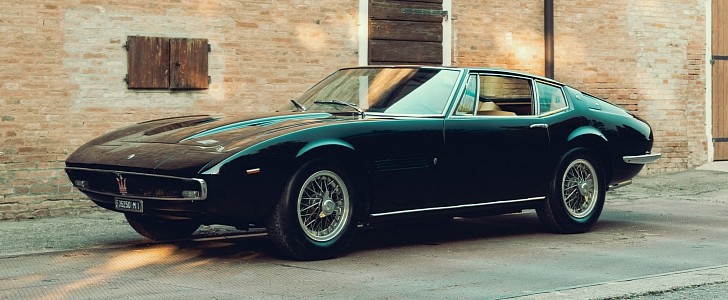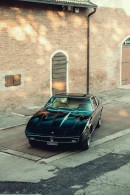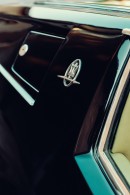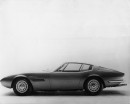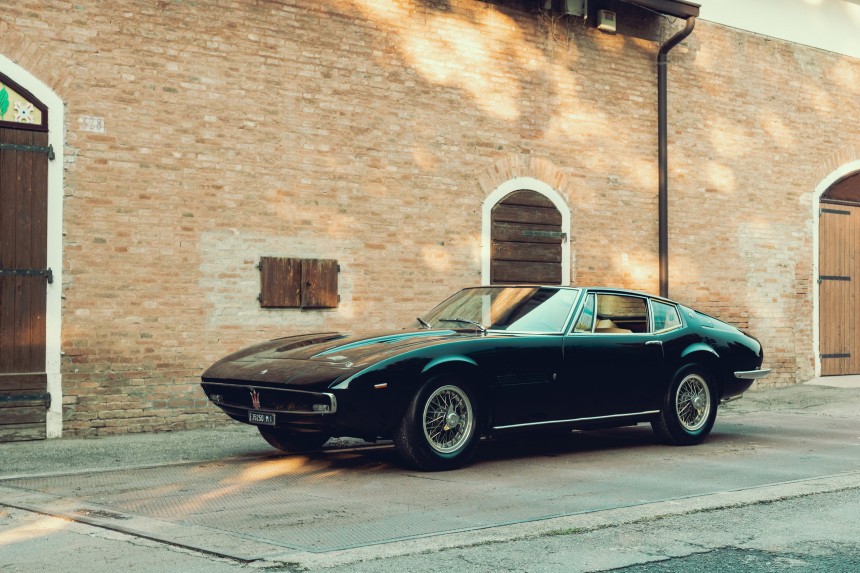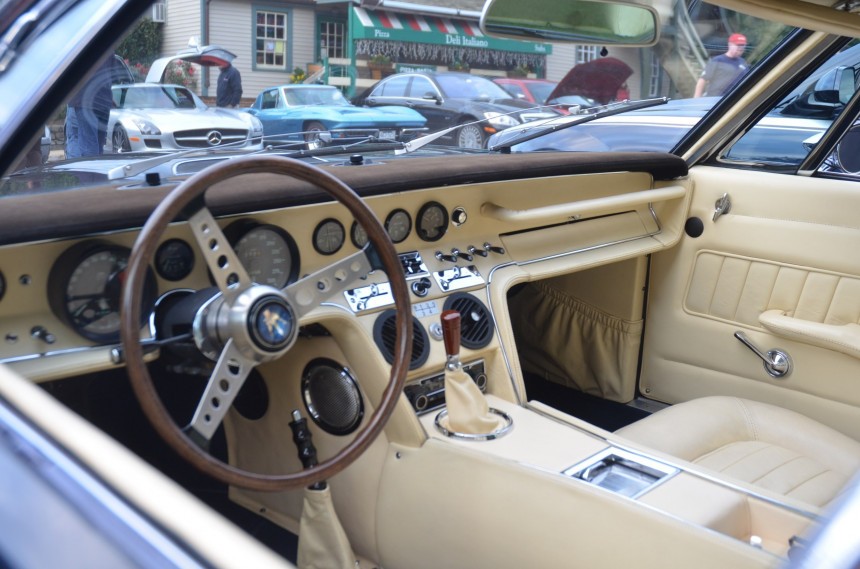Back in the 1960s, Maserati decided that the 5000 GT and Mistral needed a proper successor, so work on the development of a new grand tourer began.
With the famous Giorgetto Giugiaro on its team, the styling was entrusted to Ghia, which gave it distinctive looks. The body and passenger compartment were neither separate nor overlapping, but rather joined together as a single surface, and there was no distinction between them.
This was called “the integration of the volumes,” and is the mean reason behind the design of the vehicle, which also featured a long and low hood, heavily raked windscreen, triangular rear pillar, and pop-up headlights mounted above the rather small grille with the Trident logo in the middle.
Looking like something the villain from a James Bond film would drive, it was officially christened the Maserati Ghibli, after a warm wind in North Africa that normally carries a great deal of sand with it, and celebrated its world premiere on November 3, 1966, during the Turin Motor Show. The two-seater went on sale the following year, and in 1969, it was joined by the Spyder, which could be equipped with a hardtop.
In 1970, the Italian automaker gave it the SS suffix to highlight the new engine, whose displacement was increased from 4.7 to 4.9 liters. The new V8 mill was capable of pushing out 335 ps (330 hp / 246 kW) and 480 Nm (354 lb-ft) of torque, up from the previous 330 ps (325 hp / 243 kW) and 393 Nm (290 lb-ft). The 0 to 100 kph (0-62 mph) sprint took 6.8 seconds, an 0.6-second improvement, and it had a 257 kph (160 mph) top speed.
Besides giving it true supercar performance for that day and age, the engine, which was hooked up to a five-speed manual transmission from ZF or a three-speed automatic, also contributed to the design of the original Ghibli. How exactly, you ask? By featuring a dry sump, a solution borrowed from the world of racing, and by being mounted on a tubular chassis, in a very low position, which allowed the design team to shape the hood.
Between 1967 and 1972, Maserati estimates to have built more than 1,200 Coupes and 128 Spyders. One of them is said to have ended up in the possession of Henry Ford’s grandson, though not for thrashing purposes, as one might assume, but “as an example to follow, and a source of inspiration,” according to Maserati. Ford had it on display in the lobby of the company’s Product Development Center in Detroit.
After a 41-year hiatus, Maserati revived the Ghibli name yet again in 2013, using it for an executive sedan. The modern-day Ghibli was presented at the 2013 Shanghai Motor Show, with a front-engine and rear-/all-wheel drive layout, sexy styling, and cozy cockpit as a rival to the likes of the BMW 5 Series, Audi A6, Jaguar XF, and Mercedes-Benz E-Class.
In 2017, the Ghibli was facelifted and renamed the Ghibli GranLusso, getting the typical visual revisions. The second mid-cycle refresh came last year, at the same time as the electrified variant, simply named the Ghibli Hybrid. Its total output of 330 hp, which allows it to hit 100 kph (62 mph) in 5.7 seconds, is no match for the Ferrari-made twin-turbo 3.8-liter V8 powering the Trofeo versions of the Ghibli and Quattroporte. This unit is good for 580 hp, dropping the sprint time to 4.3 seconds in the smaller model.
The V8 is reportedly on its way out of Maserati’s stable, hence why the upcoming Grecale premium compact crossover will supposedly not get it. However, since we’ve strayed quite far from the original topic, we’d better end it here, yet not before inviting you to scroll back up and check out the gorgeous classic Ghibli in our image gallery.
This was called “the integration of the volumes,” and is the mean reason behind the design of the vehicle, which also featured a long and low hood, heavily raked windscreen, triangular rear pillar, and pop-up headlights mounted above the rather small grille with the Trident logo in the middle.
Looking like something the villain from a James Bond film would drive, it was officially christened the Maserati Ghibli, after a warm wind in North Africa that normally carries a great deal of sand with it, and celebrated its world premiere on November 3, 1966, during the Turin Motor Show. The two-seater went on sale the following year, and in 1969, it was joined by the Spyder, which could be equipped with a hardtop.
Besides giving it true supercar performance for that day and age, the engine, which was hooked up to a five-speed manual transmission from ZF or a three-speed automatic, also contributed to the design of the original Ghibli. How exactly, you ask? By featuring a dry sump, a solution borrowed from the world of racing, and by being mounted on a tubular chassis, in a very low position, which allowed the design team to shape the hood.
Between 1967 and 1972, Maserati estimates to have built more than 1,200 Coupes and 128 Spyders. One of them is said to have ended up in the possession of Henry Ford’s grandson, though not for thrashing purposes, as one might assume, but “as an example to follow, and a source of inspiration,” according to Maserati. Ford had it on display in the lobby of the company’s Product Development Center in Detroit.
In 2017, the Ghibli was facelifted and renamed the Ghibli GranLusso, getting the typical visual revisions. The second mid-cycle refresh came last year, at the same time as the electrified variant, simply named the Ghibli Hybrid. Its total output of 330 hp, which allows it to hit 100 kph (62 mph) in 5.7 seconds, is no match for the Ferrari-made twin-turbo 3.8-liter V8 powering the Trofeo versions of the Ghibli and Quattroporte. This unit is good for 580 hp, dropping the sprint time to 4.3 seconds in the smaller model.
The V8 is reportedly on its way out of Maserati’s stable, hence why the upcoming Grecale premium compact crossover will supposedly not get it. However, since we’ve strayed quite far from the original topic, we’d better end it here, yet not before inviting you to scroll back up and check out the gorgeous classic Ghibli in our image gallery.
